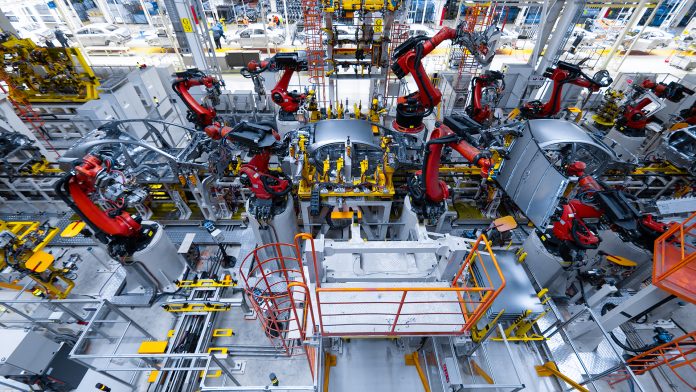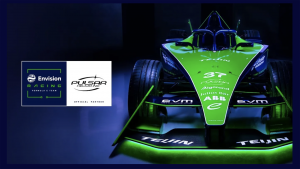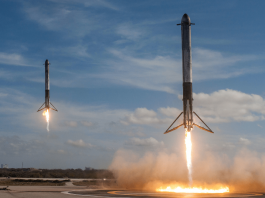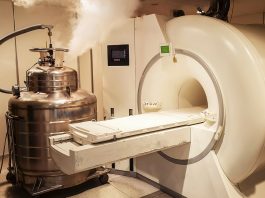Thomas Abraham-James, President and CEO of Pulsar Helium Inc., outlines the company’s valuable helium assets and helium’s role in the manufacture of electric vehicles.

While much attention has been given to the raw materials necessary for the automotive industry and the shift to electric vehicles, the equally critical materials in the manufacturing process have been largely overlooked. One such material is helium, which is currently in short supply and has been added to the European Union’s 2023 list of critical raw materials.
Pulsar Helium Inc, a Canadian company dedicated to advancing new helium assets aims to contribute to the supply of this vital element. Pulsar intends to list on the TSX Venture Exchange by mid-2023 and use the funds to expedite its activities. Pulsar has two primary helium assets, the Topaz project in the USA, a confirmed discovery with one of the world’s highest-known helium contents, and the vast Tunu project in Greenland. Both projects are not associated with hydrocarbon production, making them potential sources of carbon-neutral helium at a time when global supply is diminishing.
Helium is a critical element in numerous industries, including healthcare, aerospace, computing, and the automotive industry, which is the focus of this article. Helium is essential to automotive engineering and the green transition to zero-emission vehicles, playing a vital role in semiconductors, leak detection, welding, testing, and airbags. Its unique properties, such as inert and cold temperatures, make it an ideal substance for these applications.
Partnership with Envision Racing
Pulsar recently partnered with Envision Racing, a leading Formula E race team, to promote a healthier planet through their respective global platforms. Envision Racing is the first carbon-neutral Formula E team (PAS 2060) and one of the few to achieve the FIA’s Three Star Sustainability Accreditation. Pulsar’s commitment to primary helium, a key component in automotive engineering, aligns well with Envision Racing’s sustainability programme, created to accelerate the transition to zero-emission vehicles.
Sylvain Filippi, Managing Director at Envision Racing, said, “We are proud to welcome Pulsar Helium to the Envision Racing family of partners. Helium is a key component in the automotive industry, and primary helium will play an important role in the green transition. Pulsar’s commitment to primary helium assets was a great fit for us and our audience, and we are looking forward to working with the team.”
Helium’s uses in the automotive industry
Semiconductors
Semiconductors are crucial components in the automotive industry, particularly in modern electric vehicles, due to their computing capability. The vehicle’s ‘brain’ enables all electronic processes, such as power and drive management, infotainment systems, autonomous driving, and even headlamps. Typically made of silicon, semiconductors conduct electricity better than insulators and are found in computer chips and processors.
During the semiconductor manufacturing process, chemical reactions generally are gas or liquid-based. Using inert gas, like helium, around the silicon helps prevent unwanted reactions, as helium does not react with other elements. Additionally, helium has a high thermal conductivity, which aids in heat transfer, allowing for effective temperature control during the manufacturing process and making it possible to miniaturise semiconductors.
Leak detection
Helium is commonly used in leak detection tests during battery cell, module, and pack production processes, as it is non-toxic, non-flammable, and does not react with other substances. Introducing helium into the system and monitoring its presence outside the system enables technicians to detect even the most minor leaks quickly and accurately.
Welding
Another application of helium in the automotive industry is welding certain types of metals, particularly aluminium. Welding combines different parts of a car, such as the body panels and chassis. Helium is used as a shielding gas during welding to protect welds from contamination by surrounding air, which can cause oxidation. The use of helium in welding produces high-quality, durable welds that are crucial for vehicle safety in the automotive industry.
Laser cutting
Helium is also an excellent shielding gas in laser cutting, which is necessary for fabricating precision components in the automotive industry. A high-energy laser beam is used to melt or vaporise the cut material, and the shielding gas is used to blow away the molten or vaporised material, leaving a clean cut.
Helium’s high thermal conductivity helps to remove heat from the cutting area, preventing materials from melting or warping. Additionally, helium is inert, preventing material contamination and reducing the risk of oxidation or corrosion, which is particularly important when cutting sensitive materials like stainless steel or aluminium. Helium’s lightness also allows it to be easily blown away from the cutting area, preventing it from interfering with the laser beam and leading to an inconsistent cut.
Testing
In the testing of internal combustion engines and other automotive components, helium is used to measure the flow of air and fuel through an engine. By introducing helium into the engine and measuring its concentration in exhaust gases, the automotive industry can produce efficient engines and identify areas where improvements can be made.
Airbags
Helium’s high expansion rate, non-toxicity, non-flammability, and ability to maintain pressure for extended periods make it the ideal gas for inflating airbags. During an impact, a small amount of helium is released, rapidly inflating the airbag to cushion passengers in a vehicle.
Pulsar’s helium assets
Topaz Helium Project, USA
Pulsar’s flagship project is one of the highest-grade helium assets ever drilled. The Topaz Helium Project, located in Minnesota, US, flows a helium concentration of up to 10.5%, associated with only trace hydrocarbons.
The Topaz project was accidentally discovered in 2011 when an exploration company drilled for nickel but instead intercepted the previously unknown high-helium content gas. Two samples of the gas were sent for analysis to a commercial laboratory and the University of Toronto, both of which corroborated the 10.5% helium content, which will be extremely useful to the automotive industry.
The Topaz Project is located on private mineral rights for which Pulsar has an exclusive lease and additional prospective ground. Further applications have been submitted with the federal and state governments for proximal areas of interest.
The short-term work programme for 2023 is to drill an appraisal well within 20m of the 2011 discovery well and conduct down-hole testing to determine the characteristics of the helium-bearing reservoir. The task is then to fast-track the discovery toward a feasibility study to examine whether Topaz can become a commercially viable helium producer for the automotive industry.
The Topaz Project is strategically located within the US – the world’s largest market for helium. The project is in Minnesota, which has significant existing infrastructure, including nearby power and access roads. Therefore, the critical requirements for production and distribution within the US are already in place.
The geology of the discovery area is within the Mid-Continent Rift and includes some of the oldest rocks in North America, suggesting excellent helium source rock. The stable tectonic conditions prevailing over the last billion years in the Topaz area may have allowed significant helium volumes to accumulate. Extensive desktop research has shown other helium occurrences (up to 2% helium) within a 150km radius of Topaz.
The Tunu Project
Pulsar is the first mover for helium in Greenland, receiving the only license that gives exclusive rights for exploring helium, hydrogen, and all other minerals excluding hydrocarbons and radioactive elements. A prominent land position has been established, covering an area of 2,772km2.
The Tunu project is located on the east coast of Greenland, which is Europe-facing and is a minimal shipping distance to continental Europe and the US. It is serviced by an international airport near the settlement of Ittoqqortoormiit.
All the requisite geological hallmarks for a helium occurrence are present within the project area. Gas migration is evident, with abundant hot springs, of which two have been sampled, containing up to 0.8% helium with only trace hydrocarbons. The project area has some of the oldest rocks on the planet, which are excellent helium sources for the automotive industry and other applications. Moreover, there are nearby heat sources from the Jan Mayen and Iceland hotspots.
The upcoming 2023 work programme is designed to image potential helium-trapping structures via airborne geophysical data acquisition and further sampling of gas seepages.
Pulsar will soon be listed on the TSX Venture Exchange and is advancing new green projects with scale in the helium industry. To stay informed, please visit https://pulsarhelium.com or email connect@pulsarhelium.com.










